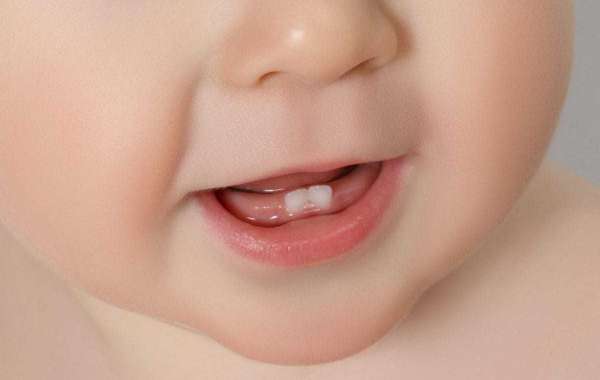Your Baby—Your World
Babies are so precious, and their smile is something to die for. Parents look forward to and celebrate even the most innocuous developments of their baby's growing up. Baby's first tooth and tooth fairies are high on their list. But what about the lovable darling's oral hygiene?? That is a grey area in most parents' minds, especially first-timers. In the baby's overall health, oral hygiene often gets lost behind the charming smile. Neglecting the cleanliness of the mouth of a baby, however, can lead to serious repercussions as the baby grows to adulthood.
Best Ways and Some Caveats
There are many questions about how to maintain oral hygiene in babies. Being aware is the first step, and this article will help clarify many doubts so that you and your baby's smile can beam its way through life.
- Start early: Oral hygiene starts early in a baby's life. Bacteria make no distinction by age. They will grow and multiply if they get a conducive environment. A baby's mouth is as susceptible to infection as that of an adult. Keeping it clean is important. Pre-teeth gums can simply be wiped clean with a finger or a soft, damp cloth. Softly and gently.
- CAUTION: Babies are delicate. Be gentle. Ensure personal hygiene of fingers and sterilization of cloth used. Be wary of fingernails. Prevent any rubbing injury to the gums.
- Teething time: Teething time is troublesome and irritating for babies. At this time, they like to bite to relieve some discomfort in their gums. This is the best time to introduce toothbrush-shaped teethers. These can have soft nubs, flat surfaces, fun shapes, etc. Cleaning by finger massage and use of teethers can go hand in hand for oral hygiene, with the added benefit of the baby getting used to a brush-like object in the mouth.
- CAUTION: Nothing hard or harsh or of small size must be given as a teether. Supervision and vigil are a must.
- Tooth eruption: The time to shift from gentle gum cleaning to brushing comes with the eruption of the baby's first tooth. Regular and gentle brushing with a baby brush with very soft bristles should be encouraged now. Choose a toothbrush with care- child brush, super soft, small head, rounded with no sharp edges, good grip, toxin-free material, etc. Initially, brushing can be done just with water just to get him used to the act and good oral care habits.
- CAUTION: Do be with the child when he is brushing. Assist and guide. Make it enjoyable and serious at the same time.
- Fuller set (milk teeth): When the child has many teeth, progress to appropriate infant toothpaste. This is also the time to teach about the correct techniques—to and fro movement, small circular motion, covering all surfaces, spitting, rinsing, etc.—. In the beginning, use a smear or a rice grain-tiny amount of toothpaste on the brush (say, up to 3 years old or for babies and toddlers) and thereafter a pea-sized amount (say, 3-6-year-olds).
- CAUTION: Continue supervision, guidance and set up brushing routines. Fix children's brushing time along with yours. Build up a habit of regular, twice-a-day brushing. Do avoid giving or sharing adult toothpaste, especially teeth whitening toothpaste. Children's toothpaste is available that has a pleasant taste and likable flavors. Make sure that the accredited dental association approves the paste. Change brushes at regular intervals (3-4 months).
When in Need, Consult
The above guidelines shall stand you in good stead and give your child a head start in excellent oral hygiene. When in doubt or requiring specific clarification, do not hesitate to consult a pediatric dentist. Your child's health is most important.






